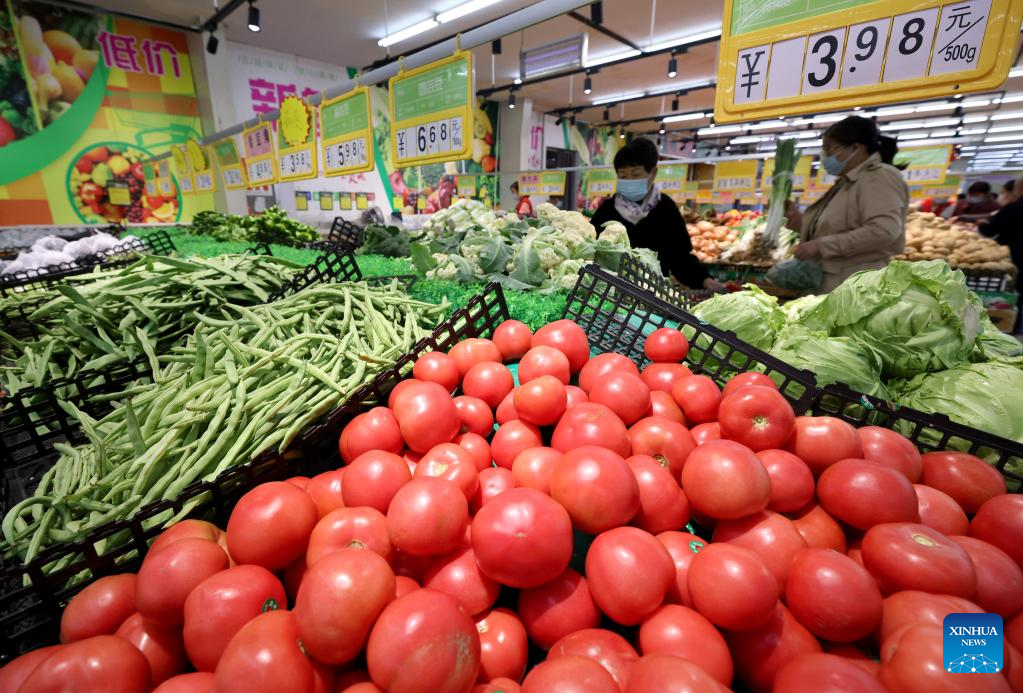China registered mild inflation in October, with the consumer price index growing by 2.1 percent from a year earlier and 0.1 percent from the previous month, a declining growth rate both on a year-on-year and month-on-month basis.

People shop at a supermarket in Zaozhuang city, East China's Shandong province, Oct 14, 2022. (Photo: Xinhua)
Even China's macroeconomic operation remains undisturbed by global inflation. Stable prices have ensured people's well-being and the stability of the market.
The risk of local outbreaks of the novel coronavirus still exists. That, coupled with rising global energy prices, imported inflationary pressures, and global foreign exchange risks and capital outflow pressures caused by the US Federal Reserve's interest rate hikes has affected China's exports, investment and consumption by different degrees.
However, the strong economic resilience showed in the first three quarters has helped China reserve momentum for the final "sprint" to stabilize the economy. The growth rate of 0.4 percent in the second quarter and 3.9 percent in the third quarter suggests China's economy reversed the downward trend from the second quarter, and with the arrival of the year-end consumption peak season, especially the rapid consumption growth of new energy vehicles, China's economic growth is expected to gain further steam in the fourth quarter.
Compared with high inflation in some countries, China's moderate inflation can be described as "countercyclical", not only showing the resilience of its economy but also highlighting its ability to fend off external market risks. In addition, the renminbi's minor depreciations against the US dollar compared with other major currencies indicate that as the largest foreign exchange reserve holder in the world, China has the ability to maintain its currency's exchange rate stability and still remain a major destination for global foreign investment.
Inflation in the United States and Europe and aggressive interest rate hikes there have had a serious impact on the global market, but China has built a powerful barrier against external shocks, winning the confidence of global capital.
The mild inflation in October has ensured the basic stability of consumer prices and stabilized people's livelihood expectations.
Of course, China's economy and people's livelihood expectations also need to be placed in the context of the global economy. China's improving economic trend as the world's second-largest economy and its 3 percent economic growth in the first three quarters mean China remains the largest contributor to the global economy.


